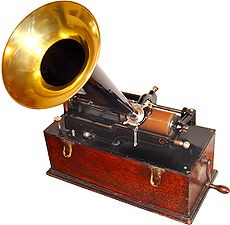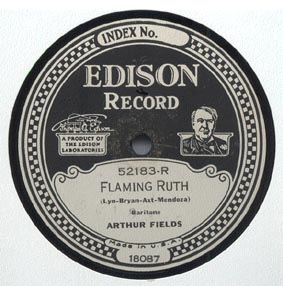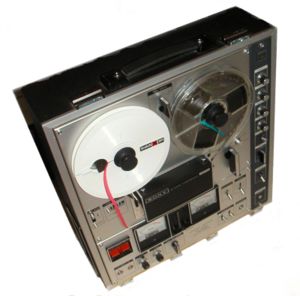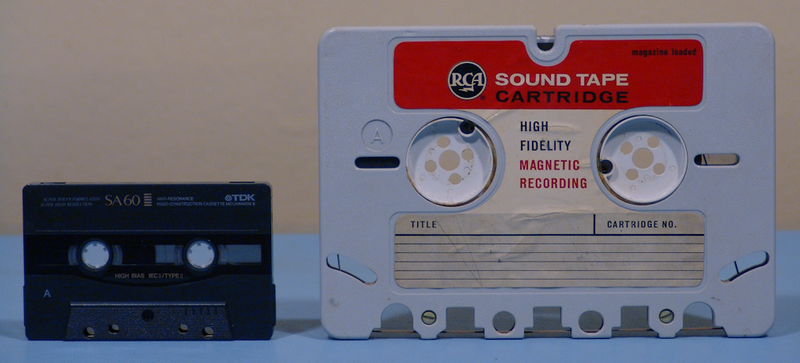|
A Galaxie History lesson Yesterday, we attended Duquesne's Techlife conference. Our fellow vendors were showcasing the amazing modern world of electronics – ipods, 3D flat screens, tablets. We decided to bring a little context to all of this modernity. This is the Edison Phonograph record player, invented in 1877 by Edison in New Jersey (see New Jersey, you're classy after all!). This was the first machine capable of reproducing sound. Attempts to record sound had occured many years prior to this, but until the phonograph, those sounds could not be played. Notable attempts at recording sound include a recording done on a pig's ear. The records that the phonograph played were round and held 2 minutes worth of (hilariously old-timey) music. When we fired this old phonograph up at Duquesne, it sure stood out. This is truly the first turntable! Our timeline thereafter included the diamond disc also known as the "edison disc record" – the first flat vinyl record which was invented in 1912. The disc is 10 inches and 1/4 inch thick (the thickness garnered from its wood flour and later china clay filling!). The play on the diamond disc neared a wowing 5 minutes per side (go, go flaming ruth!). The diamond disc eventually evolved into the 78 for which there is still a substantial following today. The 78 was made possible by advances in the recording industry. Throughout the early 1920s, engineers began to perfect their skills at using electricity to drive a recording head to cut soundwaves into shellac record. For our next stop on the visual timeline after the 78, we brought the gold old 33 1/3. In 1931, the vinyl 33 was commercially introduced boasting longer playback and less noise distortion. It really began its ascent through the 40s and 50s, and the 78 began to decline over the next few decades. In 1949, the 45 appeared and vinyl was officially here to stay. Following the reel-to-reel was the RCA Victor tape cartridge, which appeared in 1958. It was the first cartridge type cassette, essentially drawing on the magnetic tape recording concepts pioneered with reel-to-reel. The Victor tape was a 5 x 7 inch magazine loading cartridge which was But the RCA Victor did lay the design groundwork for the more popular compact audio cassette which debuted in 1962. The compact cassette quickly became very popular, aided by their protability and storage capacity which eventually could accomodate as much as 60 minutes of media per side. The Sony walkman, which appeared in the 80s, now allowed users to take their music with them. It was not until the emergence of the compact disc (CD) in 1978 that the cassette had any significant competitors. Developed from visual laser disc technology, the first CDs could hold 150 minutes of audio media. Computers had become a substantial factor in media, and the CD was a pioneer in playing back new digital media. The digital/analog split had formed. This was a watershed event. In the early 90s, Sony and Phillips created the first recordable CDs, which could now be "written" by a computer with digital information. Consumers could now easily move large quantities of digital audio onto a medium. The technology took off. In 1998, SaeHan Information Systems in South Korea developed the first portable solid state digital media player which they called the "MPman". The basic player was capable of holding up to 64MB of data and was powered by a single AA battery. And in 2001, Apple entered the digital media player market with the iPod classic. The iPod utilized a much more popular rechargible NiMH battery and boasted 5 GB of storage capacity. Music was now the supremely portable and full-fledged digital. |




 reversible and could play 30 minutes of media on either side. The Victor never gained much poularity and production of the large tape ceased in 1964.
reversible and could play 30 minutes of media on either side. The Victor never gained much poularity and production of the large tape ceased in 1964.